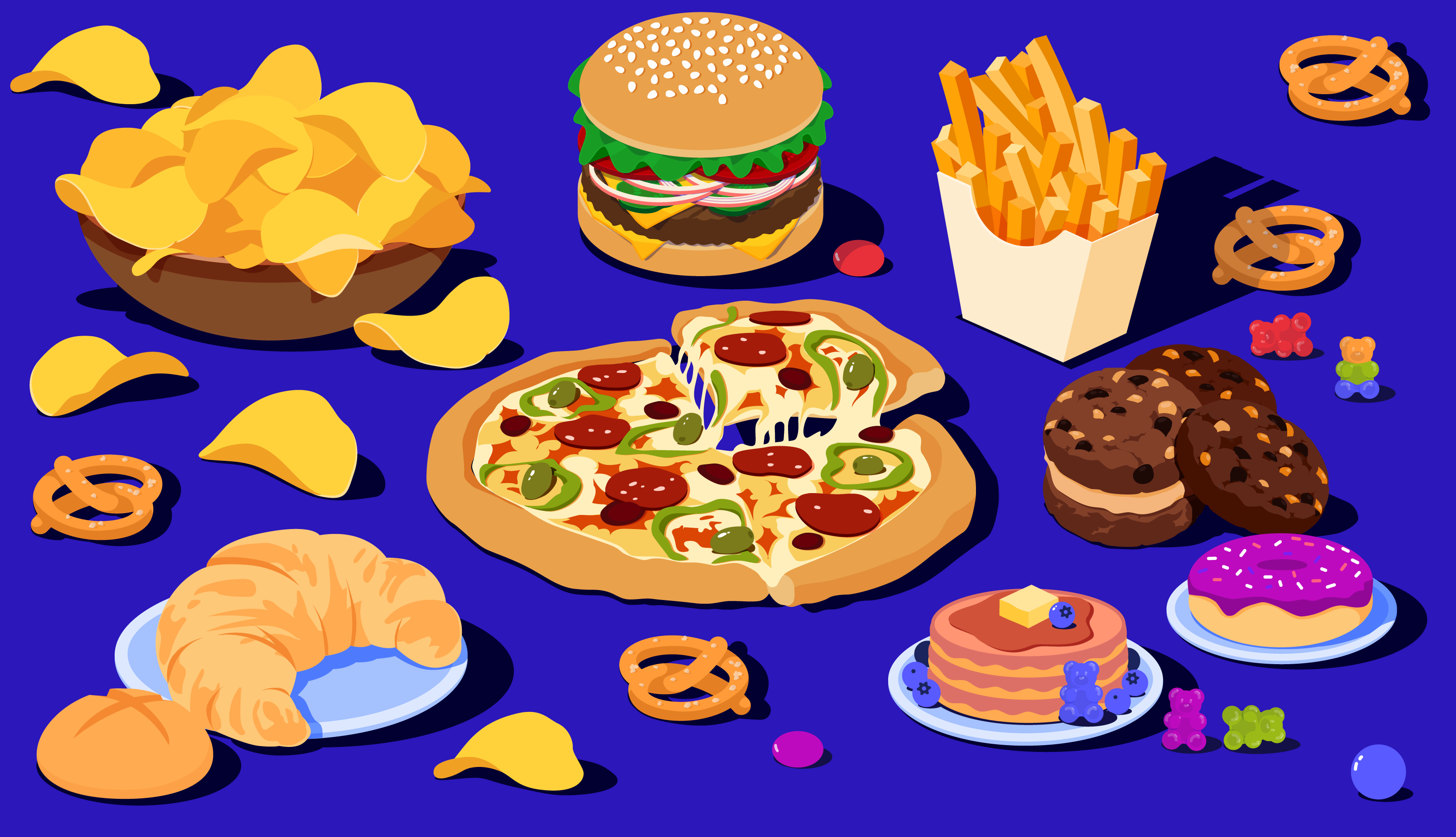What are UPFs?
UPFs are industrially manufactured, chemically or physically transformed, ready-to-eat packaged food/drink products. These are not real foods but industrial formulations of oils, fats, sugars, starch, and protein isolates; often containing flavorings, colorings, emulsifiers, and other cosmetic additives. They contain substances that are not usually found in domestic kitchens. According to an expert opinion in the leading medical journal BMJ, if a food product contains more than 5 ingredients it is most likely to be UPF. Simply explained with this example: Breads made in local bakeries only from
What is ‘Nova classification’ for foods?
The Nova Classification emerged from Brazil in 2009 that classifies four food groups based on processing and has been commonly used today for research and nutrition surveys. Group 1 consists of unprocessed or minimally processed foods e.g. fruits, vegetables, pulses, rice, eggs, meat, fish, or milk. Group 2 consists of processed culinary ingredients, including salt, vegetable oils, butter, sugar, and other substances used in kitchens to prepare meals. Group 3 is ‘processed foods’, which consist of canned vegetables or fruits with added salt or sugar. Group 4 consists of ultra-processed food products (UPFs) like sodas, ice creams, bakery, biscuits, and chocolates.
Health Concerns
Prevalence of obesity in India, which is a major health risk, has increased by nearly 25% during the last 5 years, both in adult men and women. So is the rising type 2 diabetes and other non-communicable diseases. Intake of UPFs leads to overconsumption of food. High versus low consumption of ultra-processed diets has been found to be associated with chronic diseases like overweight, type-2 diabetes, cancers, hypertension, heart disease, depression, and all- cause mortality. People who consumed 10% increased UPFs in their diet had a 15% greater chance of developing type 2 diabetes. New research highlights how UPFs can also significantly accelerate a person’s cognitive decline.
What makes UPFs harmful?
UPFs work through various mechanisms. They lead to intake of poor- quality diets displacing the unprocessed or minimally processed foods. UPFs are usually high in sugar/salt or saturated fats, which makes them harmful. According to a study commissioned by FSSAI, most of the packaged food products (more than 1300 products) sold in India are high in salt /sugar or saturated fats. Ultra- processing alters the food matrix and its structure, which destroys the nutrition quality and affects the satiety center that makes you eat more.
During packaging, potentially toxic compounds are added into the food especially with long exposures. These chemical compounds have been shown to be associated with cancers, type-2 diabetes, cardiovascular disease and obesity. There are trillions of gut microbes, which protect human health through performing core functions such as digestion, metabolism and immune mechanisms. Intake of UPFs alters this arrangement. Food additives such as colorants, emulsifiers can lead to chronic inflammatory diseases. Some beverages include artificial sweeteners, which are linked to cancers. There is strong evidence of the association of ultra- processing with negative health outcomes independent of the nutrient content.
The UN Food and Agriculture Organization, UNICEF, recognizes that increasing consumption of ultra-processed food products (UPFs), leading medical journals like the Lancet, BMJ, Public Health and Nutrition, Endocrinology, have reviewed and published the evidence and call for policies that would reduce the consumption of UPFs.
The National Institute of Nutrition of Government of India has recently recommended “…ultra-processed’ foods, whose basic edible and nutrient portions are greatly altered and those that have artificial ingredients, may be clearly indicated by a symbol or any such indicator right on the front of the pack..”
Rising Consumption of UPFs
The market led to mass production and made these affordable. Aggressive marketing created the need by projecting as ‘healthy’. These factors contributed to increased consumption of UPFs. The United States tops the list with 57% of the daily energy intake coming from UPFs. Several countries that follow are the United Kingdom, Canada, Barbados, Australia, France, Belgium, Chile, Brazil, Taiwan, Mexico and Colombia being the last at 15.9%.
India is not yet in this list, however sales data from the past decade suggests rapidly rising consumption of such food and drink products. Surely , that makes a case to halt the rise.
Way Forward
In conclusion, concrete steps to regulate production, supply and distribution of UPFs through a legal framework is necessary to mitigate health concerns.
Article 21 of the Constitution of India sets in place a paramount duty on the Governments to achieve an appropriate level of protection to human life and health. The Consumer Protection Act 2019 and Guidelines of 2022 restrict misleading advertisements. At places it requires health warning from other legislations to be effective. The Food Safety Act 2006 also says there will be no misleading advertisements. However, advertisements continue unabated including endorsements by celebrities.
Government of India needed to do more to end marketing to achieve the goal, and may consider a clear ban on advertisements and endorsements of UPFs and high sugar/fat or salt products. Another concrete step can be the highest slab of GST imposed on UPFs. Both these steps have been observed to be useful in other countries to reduce consumption of UPFs. Lastly , all consumers need to know about the risks of diets high in UPFs in order to reduce intake. A national and local campaign via all mediums(print, TV, and Social media) in all languages may be a productive investment to make. Lastly , FSSAI may issue a health warning on UPFs indicated by a symbol and link this to the awareness campaign.
Dr Arun Gupta is a senior pediatrician, convener of Nutrition Advocacy in Public Interest (NAPi) and former member of the PM’s Council on India’s Nutrition Challenges.
HALT THE RISING CONSUMPTION OF ULTRA- PROCESSED FOODS
इस शब्द का अर्थ जानिये
- Advertisement -

